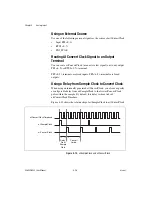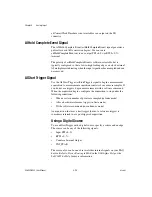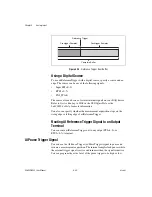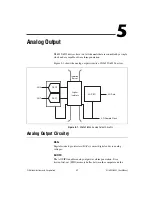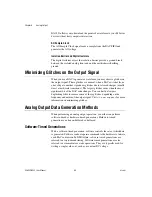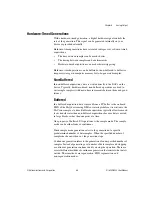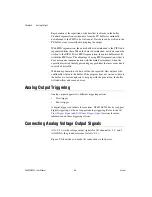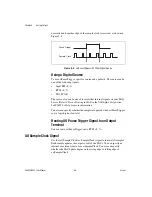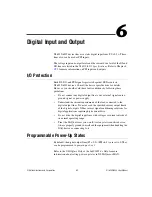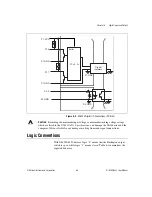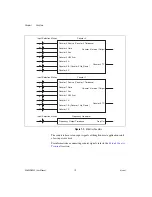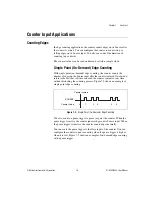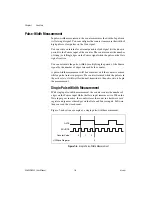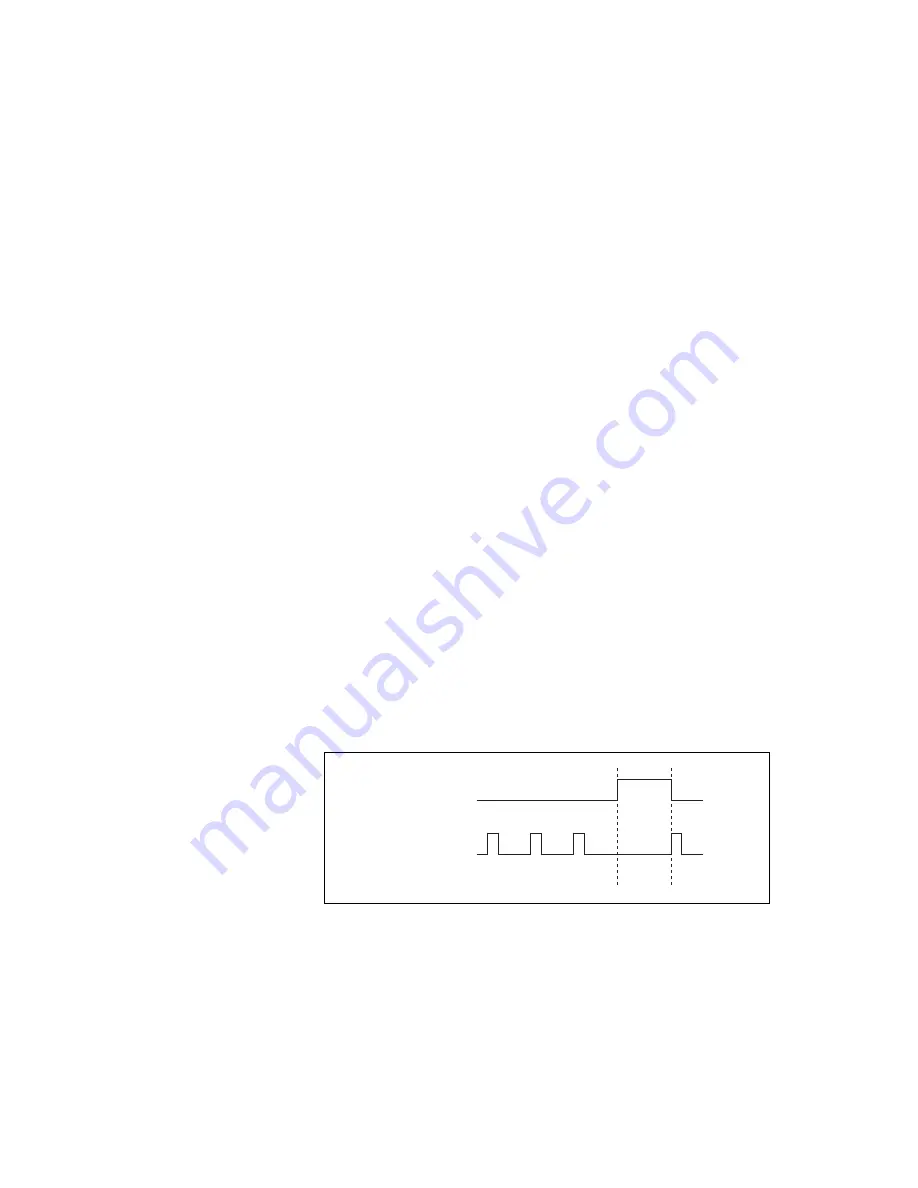
Chapter 5
Analog Output
©
National Instruments Corporation
5-7
The source also can be one of several internal signals on your DAQ device.
Refer to
Device Routing in MAX
in the
NI-DAQmx Help
or the
LabVIEW 8.x Help
for more information.
You also can specify whether the waveform generation begins on the rising
edge or falling edge of ao/StartTrigger.
Routing AO Start Trigger Signal to an Output
Terminal
You can route ao/StartTrigger out to any output PFI <6..9> or RTSI <0..7>
terminal.
The output is an active high pulse.
PFI <0..5> terminals are fixed inputs. PFI <6..9> terminals are fixed
outputs.
AO Pause Trigger Signal
Use the AO Pause Trigger signal (ao/PauseTrigger) to mask off samples in
a DAQ sequence. That is, when ao/PauseTrigger is active, no samples
occur.
ao/PauseTrigger does not stop a sample that is in progress. The pause does
not take effect until the beginning of the next sample.
When you generate analog output signals, the generation pauses as soon as
the pause trigger is asserted. If the source of your sample clock is the
onboard clock, the generation resumes as soon as the pause trigger is
deasserted, as shown in Figure 5-4.
Figure 5-4.
ao/PauseTrigger with the Onboard Clock Source
If you are using any signal other than the onboard clock as the source of
your sample clock, the generation resumes as soon as the pause trigger is
Pause Trigger
Sample Clock



